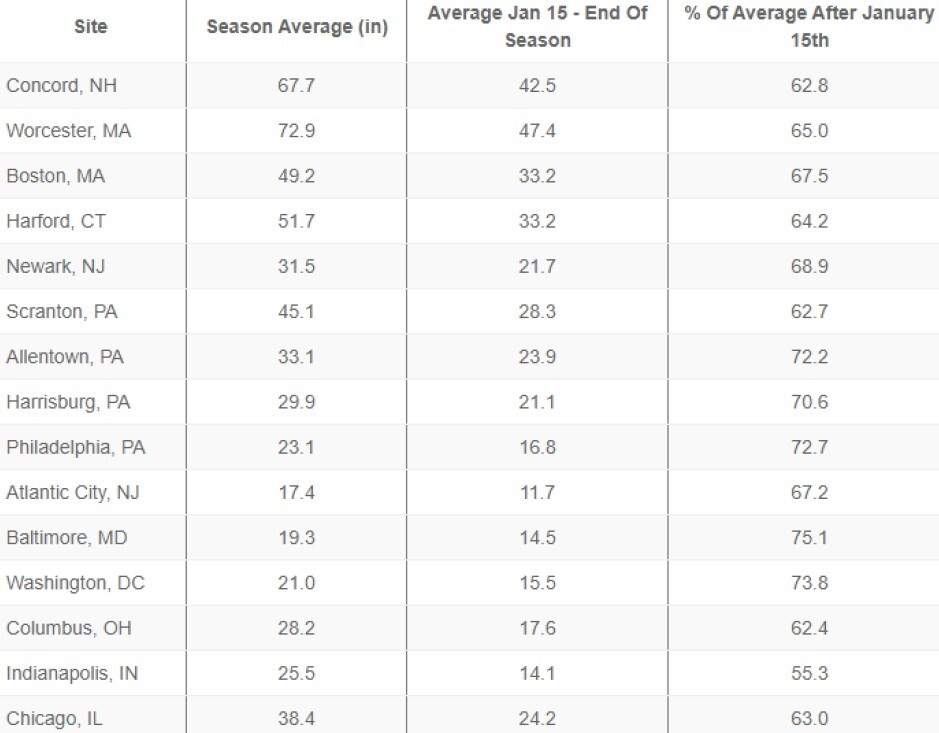3 common misconceptions about snow and ice management

Snow and ice management is extremely important to help safeguard people, property, and the environment. Proper snow and ice management can help prevent slip and fall accidents, car accidents, and damage to buildings and properties. It can also help reduce the risk of flooding, which can cause serious damage to homes and businesses, alike. Improper snow and ice management can cause hazardous conditions to a property and its surrounding environment.
Let’s look at three common misconceptions about the snow and ice management industry and practices.
1) Snow & ice management is an isolated job that only occurs during a snowstorm
There is a common belief that snow removal contractors only work when it snows. On the contrary, most of what snow & ice management professionals do takes place in between snow events. For example, once a parking lot has been cleared and hard surfaces treated for ice mitigation, snow and ice professionals will continue monitoring serviced locations to ensure safety and minimize the threat of slip and fall liability. Dangerous and icy conditions can easily form depending on sun exposure and ground temperatures, causing snow to melt and refreeze. This is a constant threat in between plowable events and is why constant vigilance and location of snow piles is so crucial to ensuring safety.
Snow and ice management is an ongoing job, as the area must be monitored and managed prior, during, and after each weather event.
- Preparation: Before a snowstorm, snow and ice management companies will assess the potential impact of the storm, develop an action plan, and make sure their equipment and personnel are ready for the event. The team will determine what locations will require a pretreatment and complete, as needed. They will also communicate their plans to the clients and adjust if needed, based on those discussions
- The Event: During a storm, snow and ice management companies will service their assigned areas, clearing snow based on the agreed upon scope for that particular location (mixed precipitation events may require in storm deicing treatments, as well).
- Ice Control: After the snow has been cleared, snow and ice management professionals apply de-icing treatments to hard surfaces to reduce the risk of ice formation and make travel safer for pedestrians and vehicles.
- Cleanup: After the storm has passed, snow and ice management companies will clear any residual snow and treat remaining areas for ice mitigation, as well.
- Monitoring: Snow and ice management professionals monitor the weather, air/ground temperatures, and the locations they are responsible for 24/7 throughout the winter season.
- Equipment Maintenance: After each event, salt trucks will be washed to prevent equipment malfunction and/or corrosion. Equipment will be inspected, repaired, and refueled in priority order.
2) If it doesn’t snow a lot, snow professionals don’t work a lot
The snow & ice management industry services are most obvious when the world is awake, but most of our activity takes place when everyone else is sleeping. Ice management is a huge part of what we do and a major reason why snow professionals have to stay alert 24/7. Snow fighters monitor weather activity and ground conditions around the clock to thwart any threat that could lead to potential hazards.
Snow is certainly a threat, and although it is very important to clear lots and walkways of it, ensuring safe driving conditions and allowing workers and customers to access businesses and facilities, ice is definitely the biggest threat. In the fall, winter, and even spring season, when moisture is observable, even the thinnest layer of water on asphalt, stairs, or walkways could be fatal if the air/ground temperatures are right around freezing point. The coldest time of day is usually 6am. This is why snow and ice management services require continuous monitoring all season long and most ice mitigation treatments are performed at night, when everyone’s sleeping. You must be proactive versus reactive to ensure people are always traveling in a safe environment.
3) Late start means below average winter.
It is widely thought that little to no snow in the beginning of winter equals below average snow totals at the end of the season.
Snowfall patterns can be unpredictable and can vary greatly from year to year. A slow start to snowfall does not necessarily lead to a below average winter. It is actually quite common for many regions of the United States to experience significant snowfall late in the winter season.
Most years we do not see a lot of snow before January 15th. When looking over historical data we can observe that the Mid-Atlantic and Northeast see roughly 2/3 or 3/4 of their entire seasonal snowfall in the second half of the season. So even though it may seem like a below average winter, Mother Nature can, and usually does balance things out by the end of the season.
The table below shows the percentage of seasonal snowfall that normally falls after January 15th.

The misconception also happens, because we know it can snow as early as October. This tricks our mind into thinking we have been in winter for multiple months by the end of January. But in reality, we are only 1 month in. The heart of the snow season truly is in February and March.
